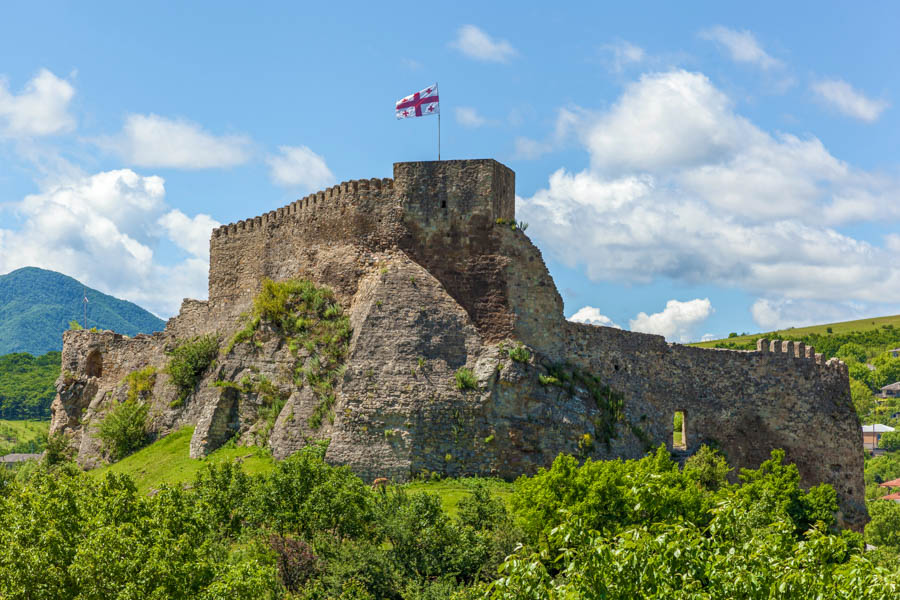
Surami Fortress (Georgian: სურამის ციხე) is located in the small resort town of Surami in Khashuri Municipality, 55 km from Gori, Georgia. Anyone traveling from eastern to western Georgia will pass through Surami, a beautiful town known for its historically significant monuments and delicious sweet bread called nazuki. Time permitting, it is worth stopping to experience the castle and other sights in person.
Historically the fortress, which sits on a rocky cliff on the bank of the Suramula River, held great strategic importance. Located on the road leading to the Likhi Range in the west and Borjomi Gorge in the south, whoever controlled this outpost also held control of these essential roads by default.
History of Surami Fortress
According to Georgian historians, the fortress was built in the 11th century during the land’s early stages of feudalism. Another theory suggests that Surami Fortress first appeared in the 12th century. Either way, it was reconstructed several times in the following centuries.
Due to its strategic location, Surami became a heavily fortified town in the 12th century. From the 12th to the 14th centuries, it was controlled by the Eristavs, dukes of Kartli. Thanks to its prime location, the fortress was often under attack. Surami gradually declined in influence but remained a lively trading post, and during the 16th-17th centuries the fortress was reconstructed.
In the 1740s, Surami was used by Prince Givi Amilakhvari as his base during battles against King Teimuraz II and the Persians. After the prince surrendered in 1745, the fortress was demolished, only to be restored and used by the Russo-Georgian troops in anti-Ottoman operations during the Russo-Turkish War (1768–1774). In the 19th century, it lost its military significance and fell into disrepair.
Architecture
Surami Fortress was constructed on a rocky outcrop and has a rather complicated design. The walls vary in thickness, measuring up to three meters across in some places. Originally the castle consisted of an upper and lower tier, but unfortunately nothing is left of the lower section.
The upper fortress consists of a fence, tower, church, palace ruins and the remains of various agricultural buildings. The tower, located directly above the entrance wall, was originally five meters in height, two-storied and pyramidal in shape. The church is located in the southeastern quadrant of the fortress. A hall church, its walls were covered with hewn stone and ornamentation. A storeroom was later added to the south of the church. The palace is located in the outpost’s western section.
Surami Fortress even has a concealed escape tunnel, although it is currently blocked and inaccessible. Architects believe that the tunnel led eastward beneath the Amaghleba (Ascension) Church and ended at Kvartisi Mountain, which has many natural springs that could easily have sustained the small garrison when under attack.
Legend
An old legend likely tied to ancient pagan belief claims that the walls of Surami Fortress owe their sturdiness to the fact that a man named Zurab was sacrificed here. The builders faced continual trouble erecting the fortress walls, which were always crumbling just as they neared completion. A fortune teller was consulted and claimed “For the fortress to remain standing, someone must be buried inside”. After sacrificing the man, the castle walls remained intact. Since Surami Fortress has never been excavated, the secrets it holds remain a mystery.
Interesting Facts
The above legend was resurrected when Georgian author Daniel Chonkadze wrote a novel about Surami Fortress. The novel was later made into a film by a Georgian director of Armenian descent, Sergei Parajanov, in his 1985 award-winning feature film The Legend of Suram Fortress.

